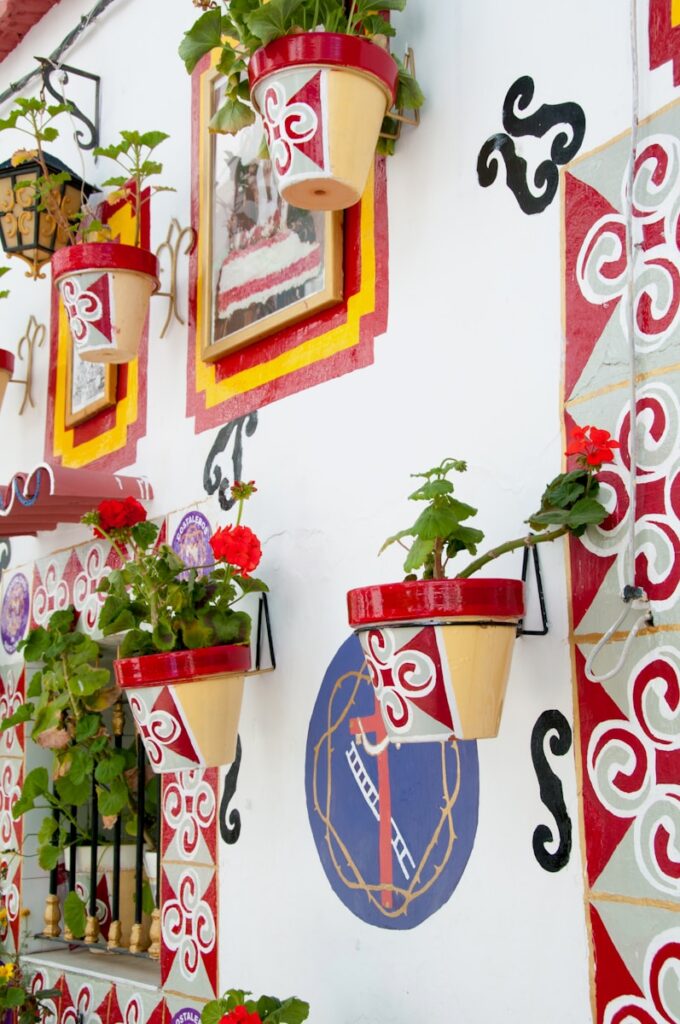How Do You Ask Someone Out in Spanish? Phrases and Tips
Picture this: You’re on a sun-soaked beach in Spain, the sound of waves crashing in the background. You’ve just met someone amazing, and you’re dying to ask them out. But there’s a catch – you need to do it in Spanish. Your heart races, your palms get sweaty, and you wonder, “How do I even start?”
Asking someone out in a different language can feel like exploring a labyrinth. But don’t worry, it’s not as daunting as it seems. With a few key phrases and a bit of confidence, you’ll be ready to sweep them off their feet. Imagine the look on their face when you charmingly ask, “¿Te gustaría salir conmigo?” – it’s bound to be unforgettable.
Essential Spanish Phrases for Asking Someone Out

Want to ask someone out in Spanish but not sure where to start? These key phrases can help you take the leap, whether you’re aiming for something direct or more casual.
“¿Te gustaría salir conmigo?” (Would you like to go out with me?)
Pronunciation Guide
Pronounce this phrase as: Teh goos-TAH-ree-ah sah-LEER cohn-MEE-goh.
When to Use This Phrase
This phrase is your go-to when you want to be clear and direct. Ideal for situations where you feel confident about the other person’s interest, it leaves no room for ambiguity.
“¿Quieres tener una cita conmigo?” (Do you want to have a date with me?)
Use this phrase when you want to be explicit about your intentions. It’s best suited for formal situations where clarity is crucial.
Casual Alternatives: “¿Podemos quedar algún día?” (Can we meet up sometime?)
Keep it casual with this phrase. It’s perfect for gauging interest without the pressure of labeling it as a date.
Indirect Approaches: “¿Te apetece hacer algo juntos?” (Would you like to do something together?)
For those who prefer subtlety, this phrase suggests a shared activity without directly asking for a date. Great for early stages of getting to know someone.
Setting the Scene: Pre-asking Conversation Starters
Asking someone out in Spanish can be a charming and exciting try. Setting the right tone beforehand helps build comfort and a friendly atmosphere. Let’s explore some key conversation starters.
Building Rapport in Spanish
Making someone feel comfortable starts with light, engaging questions. This will help you break the ice and build a connection.
“¿Qué planes tienes para el fin de semana?” (What are your plans for the weekend?)
Asking about their weekend plans shows you’re interested in their life beyond the surface. It’s a natural way to get them talking.
“¿Te gusta [activity]?” (Do you like [activity]?)
Showing interest in their hobbies creates common ground. For example, ask, “¿Te gusta bailar?” (Do you like dancing?) if you know they enjoy it.
Flirting Basics in Spanish
Subtle flirting can hint at your interest without coming on too strong. Compliments and expressing interest go a long way.
Compliments: “Me encanta tu sonrisa” (I love your smile)
Who doesn’t appreciate a compliment? Not only does it make them feel good, it subtly shows your admiration.
Showing Interest: “Me gustaría conocerte mejor” (I’d like to get to know you better)
This phrase clearly indicates your desire to connect on a deeper level. It’s sincere without being overwhelming.
Phrase | Translation | Usage Context |
|---|---|---|
¿Qué planes tienes para el fin de semana? | What are your plans for the weekend? | Casual conversation starter |
¿Te gusta [activity]? | Do you like [activity]? | Finding common interests |
Me encanta tu sonrisa | I love your smile | Complimenting, building rapport |
Me gustaría conocerte mejor | I’d like to get to know you better | Expressing a deeper interest |
Using these phrases effectively makes the process of asking someone out in Spanish smooth and engaging. Engage genuinely, listen actively, and let the conversation flow naturally.
Crafting the Perfect Spanish Date Invitation

Think about how asking someone out in Spanish could boost your charm and confidence. Jump into this guide to help you master the art of Spanish date invitations.
Suggesting Specific Activities
The invitation sets the tone for your date by matching the activity to your shared interests.
“¿Te gustaría ir a cenar conmigo el sábado?” (Would you like to have dinner with me on Saturday?)
Dinner invitations offer a traditional and intimate setting. Imagine sharing tapas and sangria while learning more about each other. You’d ask, “¿Te gustaría ir a cenar conmigo el sábado?” and maybe suggest a trendy local spot to show you’re in the know.
“¿Qué tal si vamos por un café?” (How about we go for a coffee?)
A coffee date’s perfect for a relaxed and casual vibe. Saying, “¿Qué tal si vamos por un café?” invites your date to a low-pressure environment where conversation flows as easily as the espresso. It shows you’re interested in meaningful dialogue.
Tailoring Invitations to Interests
Personalize your invitation to make it more compelling. Think about what your date enjoys.
For Movie Lovers: “¿Quieres ir al cine conmigo?” (Do you want to go to the movies with me?)
Cinephiles will appreciate the thoughtfulness of a movie outing. Say, “¿Quieres ir al cine conmigo?” and follow up by suggesting a film genre they like. It shows you’ve paid attention to their tastes.
For Outdoor Enthusiasts: “¿Te apetece dar un paseo por el parque?” (Would you like to take a walk in the park?)
If your potential date loves nature, suggest a simple yet engaging walk in the park: “¿Te apetece dar un paseo por el parque?”. You could mention a specific park known for beautiful trails, making the invitation even more appealing.
Additional Tips
Being considerate about the way you address your date can make a big difference.
- Use “vos” in informal contexts: Especially in Argentine Spanish, this shows friendliness and cultural understanding.
- Mind formal/informal conjugations: Adjust your verb forms according to the familiarity with the person, ensuring your invitation feels appropriate and respectful.
Here’s a quick reference table for verb forms:
Tone | Singular (Formal) | Singular (Informal) | Plural |
|---|---|---|---|
Name | usted | tú / vos | ustedes / vosotros |
Example | ¿Quiere…? | ¿Quieres…? | ¿Quieren…? |
Keep these tips in mind, and you’ll find that inviting someone out in Spanish can be both fun and effective.
Handling Responses to Your Date Invitation

Asking someone out in Spanish is just the beginning. You’ll need to handle their response with grace and confidence. Let’s jump into how to navigate different scenarios.
Positive Responses and Follow-Up
You’ve asked someone out, and they’ve said yes! Now what? It’s time to plan the details and keep the conversation flowing.
“¡Claro que sí!” (Of course!) – What to Say Next
When you hear “¡Claro que sí!”, you’ve got a yes. What do you say next? Express your excitement and confirm the plan.
Examples:
Planning Details in Spanish
Now that you’ve got a date, it’s crucial to finalize the details in Spanish. Discuss the time, place, and any specifics.
Using these questions ensures the plan is clear and shows consideration for their preferences.
Dealing with Rejection Gracefully
Rejection happens, and how you handle it matters. Responding with kindness and understanding keeps the conversation respectful.
Understanding “No, gracias” (No, thank you)
If you hear “No, gracias”, it’s important to accept their decision gracefully. Avoid pressing them for reasons or pushing further.
Examples:
Polite Responses to Rejection in Spanish
Responding politely shows maturity. It keeps the interaction positive even after a rejection.
Approaching rejection with politeness and respect can often turn a potentially awkward situation into a moment of mutual respect.
Cultural Nuances When Asking Someone Out in Spanish-Speaking Countries

Asking someone out in Spanish-speaking countries requires an understanding of local cultural norms and nuances. This part of the article explores how cultural factors influence dating and flirting.
Understanding “Piropos” (Flirtatious Compliments) vs. Harassment
In many Spanish-speaking countries, piropos are common. Piropos are flirtatious compliments often directed at women in public. For example, someone might say, “¡Qué guapa estás hoy!” which means “You look beautiful today!” While some view piropos as charming, others see them as offensive. Understanding the context is crucial to avoid overstepping boundaries. Using piropos sparingly and gauging the other person’s comfort can make a significant difference.
The Concept of “Ligoteo” (Flirting) in Spanish Culture
Ligoteo, or flirting, is an essential part of Spanish dating culture. From playful banter to more direct expressions of interest, ligoteo varies widely. An example is using phrases like “Me gustas mucho,” meaning “I like you a lot.” When engaging in ligoteo, it’s important to read social cues to ensure your actions are welcomed. Unlike piropos, ligoteo often involves a two-way interaction, where mutual interest can develop more naturally.
Differences in Dating Customs Across Spanish-Speaking Regions
Dating customs can vary significantly between different Spanish-speaking regions. What works in one area might not translate well in another.
Spain vs. Latin America
In Spain, piropos have declined, especially in cities like Madrid. People there tend to approach dating with more reservation. In contrast, many Latin American countries still observe this tradition. When traveling, adapting your approach to fit regional norms demonstrates cultural sensitivity.
Urban vs. Rural Areas
A clear distinction exists between urban and rural dating practices. In large cities, modern dating apps and casual meetups are popular. Rural areas may prefer traditional methods, like community events for meeting new people. Being mindful of these differences can help you tailor your dating approach accordingly.
Region | Popular Practices | Key Differences |
|---|---|---|
Spain | Reserved approaches | Decline in piropos in urban areas |
Latin America | More traditional piropos | Higher occurrence of public compliments |
Urban areas | Apps, casual dates | Modern, less formal meeting methods |
Rural areas | Community events | Preference for traditional, face-to-face meetups |
Understanding these cultural nuances helps you navigate the dating world effectively and respectfully.
Common Mistakes to Avoid When Asking Someone Out in Spanish

When thinking of asking someone out in Spanish, it’s crucial to navigate the language and cultural subtleties accurately. These missteps can help you avoid misunderstandings and make a positive impression.
Language Pitfalls
False Friends: “Embarazada” Doesn’t Mean “Embarrassed”
Vocabulary can trip you up, especially with false friends. Imagine mistakenly using “embarazada” when you’re trying to say you’re embarrassed—suddenly you’ve told someone you’re pregnant instead! Funny now, but potentially mortifying in the moment. False friends often cause unexpected confusion.
Here’s a quick table of some common false friends to watch out for:
English Word | Mistaken Spanish Word | Correct Spanish Word |
|---|---|---|
Embarrassed | Embarazada | Avergonzado/a |
Excited | Excitado/a | Emocionado/a |
Success | Suceso | Éxito |
Actually | Actualmente | En realidad |
Overly Formal or Informal Language Use
Finding the right balance between formal and informal speech can be tricky but essential. Using “¿Cómo estás?” might feel too casual for someone you don’t know well, while “¿Cómo está usted?” could be overly formal for a peer.
Consider the context:
Cultural Faux Pas
Being Too Direct or Aggressive
While directness can be attractive, too much can feel aggressive in many Spanish-speaking cultures. Instead of coming on strong, like saying, “Sal conmigo esta noche” (Go out with me tonight), a more gentle approach such as, “¿Te gustaría cenar conmigo alguna vez?” (Would you like to have dinner with me sometime?) may be better received.
Misunderstanding Social Cues in Spanish-Speaking Contexts
Social cues vary widely. Misreading these can lead to awkward situations. For instance, a smile or light touch in Spain may mean something different than in Latin America. Observing and learning from interactions can help. Why not pay attention to how locals express interest first?
Reflecting on local customs and traditions can smoothen your journey. Remember, the effort you put into understanding these details speaks volumes and can be the difference between a missed opportunity and a memorable date.
Practice Makes Perfect: Sample Dialogues

When learning to ask someone out in Spanish, practice is key. Want to know how to break the ice with simple, effective phrases? Let’s explore some sample dialogues that’ll build your confidence.
Scenario 1: Asking a Classmate Out
Start with a friendly greeting and a straightforward invitation:
Imagine you’re intrigued by a classmate’s perspective during discussions. You can follow up with:
Starting with a gentle greeting and showing genuine interest works wonders. Wouldn’t you want someone to care about your viewpoints too?
Scenario 2: Inviting a Colleague to a Casual Outing
Handling workplace dynamics can be tricky. Keeping things casual helps:
Adding a fun activity can make your offer more appealing. Picture a relaxing day:
Being easy-going enhances your approach for a casual outing. Who wouldn’t enjoy a sunny picnic in a park?
Scenario 3: Approaching Someone at a Social Event
Social events offer chances to meet new people. Making a warm, confident introduction is key:
If dancing isn’t their thing, suggesting a chat can be engaging:
Having options makes your approach adaptable. Wouldn’t you feel more at ease if you had choices too?
These sample dialogues, practiced and adjusted to fit each scenario, will have you feeling confident when asking someone out in Spanish. Remember, showing interest and treating the other person with respect and courtesy fosters genuine connections.
Conclusion: Mastering the Art of Asking Someone Out in Spanish
Mastering the art of asking someone out in Spanish can open doors to new and exciting relationships. By learning essential phrases and understanding cultural nuances, you’ll be better prepared to make a great impression. Remember to practice your dialogues and stay mindful of regional customs to connect genuinely. With a bit of confidence and respect, you’ll find that asking someone out in Spanish can be both rewarding and fun. So go ahead, take that step, and embrace the adventure of dating in a new language!
Frequently Asked Questions
How do you ask someone out on a date in Spanish?
To ask someone out in Spanish, you can say, “¿Te gustaría salir conmigo?” which means “Would you like to go out with me?” Remember to be polite and respectful.
What are some cultural nuances in Spanish-speaking countries when dating?
In Spanish-speaking cultures, piropos (compliments) and ligoteo (flirting) can be common. It’s important to understand regional dating customs and adapt accordingly to ensure your approach is respectful and well-received.
What are common mistakes to avoid when asking someone out in Spanish?
Avoid using direct translations from your native language, which might sound awkward. Also, steer clear of overly familiar language and cultural faux pas, such as being too forward or not respecting personal space.
Can you provide sample dialogues for asking someone out in Spanish?
Sure! Here are a few examples:
Classmate: “¿Te gustaría estudiar juntos y luego tomar un café?” (Would you like to study together and then grab a coffee?)
Colleague: “¿Te gustaría ir a almorzar el viernes?” (Would you like to go to lunch on Friday?)
Social Event: “Me ha encantado hablar contigo. ¿Te gustaría salir algún día?” (I’ve enjoyed talking with you. Would you like to go out sometime?)
How do you ask a girl to be your girlfriend in Spanish?
You can ask, “¿Quieres ser mi novia?” which means “Will you be my girlfriend?” Make sure to choose a suitable moment that feels personal and significant to both of you.
What do you call a romantic date in Spanish?
A romantic date is called “una cita romántica” in Spanish. You can use this term when planning or discussing your date.






